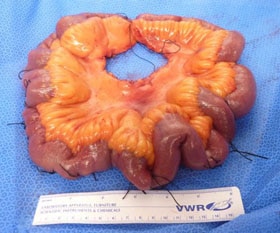Research Updates
Allergy drug inhibits hepatitis C in mice: An over-the-counter drug indicated to treat allergy symptoms limited hepatitis C virus activity in infected mice, according to an NIH study. The results suggest that the drug, chlorcyclizine HCl, potentially could be used to treat the virus in people. Results published in Science Translational Medicine.
Appetite-regulating neural pathway identified: A team including NIDDK researchers discovered a neural circuit that controls appetite in the brains of mice. Using a wide array of multidisciplinary techniques, the team found that neurons interacting with a specific receptor in a part of the brain called the hypothalamic paraventricular nucleus and the signals of those neurons to another part of the brain – the lateral parabrachial nucleus – regulate food consumption. Temporarily switching off these neurons in mice that are full makes the mice eat as though they were hungry, while turning them on reduces food consumption in hungry mice as though they were full. Results published in Nature Neuroscience.
Early tight blood glucose control reduces eye surgeries in people with type 1 diabetes: People with type 1 diabetes who intensively control their blood glucose (blood sugar) early in their disease, versus those who do not, are 48 percent less likely to need eye surgery, and the total number of such surgeries is 37 percent less. These reductions lead to ocular surgery costs about 32 percent lower for people who practice early tight glucose control. The findings are the latest results of the Diabetes Control and Complications Trial (DCCT) and its follow-up, the Epidemiology of Diabetes Control and Complications (EDIC) study. Results published in the New England Journal of Medicine.

NIH study finds genetic link for rare intestinal cancer: Heredity accounts for up to 35 percent of small intestinal carcinoid, a rare digestive cancer, according to findings from a team at the NIH. The researchers examined families with a history of the disease. Because the disease has long been considered randomly occurring rather than inherited, people with a family history are not typically screened. Researchers now recommend screening for people with a family history of the disease. Results published in Gastroenterology.
Structure of receptor discovered with implications for drug development: A team including NIH researchers has determined the high-resolution atomic structure of a cell-surface receptor that plays a critical role in thrombosis, or blood clot, formation. The structures will potentially allow drug designers to work more efficiently and with greater precision to build new molecules to modulate the function of this receptor and other closely related receptors, many of which have potential for treating cancer and inflammation. Results published in Nature.

